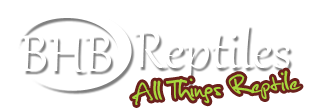Discover the fascinating world of leopard geckos and their shedding process, understanding why it's crucial and how you can help.
Understanding the Shedding Process of Leopard Geckos
As ectothermic creatures, leopard geckos, known scientifically as Eublepharis macularius, go through an intriguing process known as shedding. For new and experienced owners alike, understanding why this happens and how to aid your gecko during this period is essential. Let's delve deeper into the shedding process of leopard geckos.
Why Do Leopard Geckos Shed?
Leopard geckos, like all reptiles, shed their skin regularly, a process known as ecdysis. This is because as they grow, their old skin becomes too tight and must be replaced with new skin. In young geckos, shedding can happen quite often due to their rapid growth, while adults usually shed once every four to eight weeks.
The Shedding Process: What to Expect
The shedding process in leopard geckos begins with a change in coloration. Their normally bright and vibrant colors turn dull, and their eyes may appear hazy. This is due to a layer of fluid that forms between the old and new skin, helping to separate the two layers. After a few days, your gecko will begin to shed, usually starting at the head and working its way down the body.
Supporting Your Gecko During Shedding
During shedding, it’s important to ensure your leopard gecko's habitat has a higher level of humidity. A damp hide box can assist in this. This increased humidity helps soften the old skin, making it easier for your gecko to shed. You might also notice your gecko exhibiting unique behaviors such as rolling or twisting its body, or even eating the shed skin, which is a natural behavior that provides them with essential nutrients.
Potential Shedding Problems and How to Address Them
While shedding is a natural process, problems can occur. The most common issue is Dysecdysis, where the old skin does not completely shed, often sticking to the toes or tail. If this happens, consult a reptile-savvy vet and do not attempt to manually remove the skin, as it can harm your gecko. Regularly misting the gecko’s enclosure and providing a moist hide can help prevent such issues.
Conclusion
Shedding is an integral part of a leopard gecko's life. While it's a natural process, it's important to monitor your gecko during this period and provide the right conditions for successful shedding. With the right care and attention, you can ensure your leopard gecko remains healthy and happy throughout its shedding process.
